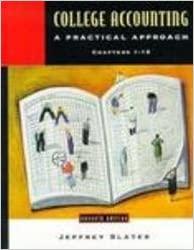Answered step by step
Verified Expert Solution
Question
1 Approved Answer
Kaizen Costing Kaizen costing is concerned with reducing costs by making small continuous improvements to existing products and processes. In operational terms, this translates into
Kaizen Costing
Kaizen costing is concerned with reducing costs by making small continuous improvements to existing products and processes. In operational terms, this translates into reducing nonvalueadded costs. Controlling this cost reduction process is accomplished by repetitive use of two major subcycles: the kaizen or continuous improvement subcycle, and the maintenance subcycle. The kaizen subcycle is defined by a PlanDoCheckAct sequence. If a company is emphasizing the reduction of nonvalueadded costs, the amount of improvement planned for the coming period month quarter, etc. is set the Plan step A kaizen standard reflects the planned improvement for the upcoming period. The planned improvement is assumed to be attainable, and kaizen standards are a type of currently attainable standard. Actions are taken to implement the planned improvements the Do step Next, actual results eg costs are compared with the kaizen standard to provide a measure of the level of improvement attained the Check step Setting this new level as a minimum standard for future performance locks in the realized improvements and simultaneously initiates the maintenance cycle and a search for additional improvement opportunities the Act step The maintenance cycle follows a traditional EstablishDoCheckAct sequence. A standard is set based on prior improvements locking in these improvements Next, actions are taken the Do step and the results checked to ensure that performance conforms to this new level the Check step If not, then corrective actions are taken to restore performance the Act step
Question Content Area
Apply the Concepts
An automotive parts division has a grinding activity for the subassemblies that it produces. Activity output is measured using grinding hours. The valueadded standard SQ for this activity is zero grinding hours. On July at the beginning of the fiscal year, sixteen grinding hours were allowed per batch which almost always corresponded to the actual grinding hours used The standard wage rate is $ per grinding hour. During July, a new procedure for production of the subassemblies was developed with the expectation that the demand for grinding would be reduced by percent. The new procedure was implemented in August and expectations concerning the effect on the grinding activity were met.
Required:
a The maintenance standard per batch at the beginning of August for grinding:fill in the blank cdfffe hours
b Expected grinding cost per batch on August : $fill in the blank cdfffe
c Kaizen standard, August : fill in the blank cdfffe hours per batch
d Expected cost Kaizen August : $fill in the blank cdfffe
Assume that a percent reduction in time for grinding was achieved in August. After determining that this reduction is sustainable, the maintenance subcycle would be revised as follows:
a New maintenance standard per batch, end of August for grinding: fill in the blank cdfffe hours
b Expected grinding cost: Round your answer to one decimal place. $fill in the blank cdfffe
Feedback Area
Step by Step Solution
There are 3 Steps involved in it
Step: 1

Get Instant Access to Expert-Tailored Solutions
See step-by-step solutions with expert insights and AI powered tools for academic success
Step: 2

Step: 3

Ace Your Homework with AI
Get the answers you need in no time with our AI-driven, step-by-step assistance
Get Started


